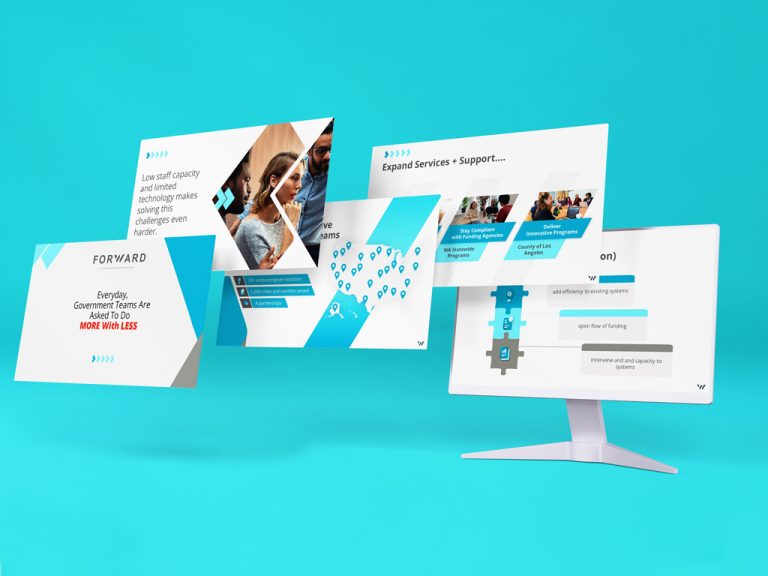We’ve all been there standing in front of a group, feeling the pressure to deliver a presentation that not only informs but also engages. It’s easy to get caught up in the nerves, stumble over words, or lose the audience’s attention. Whether it’s maintaining eye contact, avoiding filler words, or just feeling confident, giving a great presentation can seem like a daunting task.
But it doesn’t have to be that way. With a few practical tips and some practice, you can turn your presentation fears into strengths. By focusing on key areas like body language, vocal delivery, and audience interaction, you’ll find that public speaking can become a skill you actually enjoy.
So, if you’re ready to take your presentation skills to the next level, keep reading. These 12 tips will help you deliver a presentation that not only informs but truly connects with your audience.
Why Presentation Skills Are Important for Improving Your Presentation Skills?
Being able to deliver a strong presentation is more than just a nice-to-have skill it’s a crucial asset in both your professional and personal life. Whether you’re pitching a new idea at work, speaking at a conference, or simply sharing your thoughts in a group setting, how you present yourself can make a significant difference. Good presentation skills help you communicate your ideas clearly, persuade others, and leave a lasting impression.

Impact on Professional and Personal Life
Being able to deliver a strong presentation is more than just a nice-to-have skill, it’s a crucial asset in both your professional and personal life. Whether you’re pitching a new idea at work, speaking at a conference, or simply sharing your thoughts in a group setting, how you present yourself can make a significant difference. Good presentation skills help you communicate your ideas clearly, persuade others, and leave a lasting impression.
In your career, effective presentation skills can be a game-changer. They boost your ability to lead meetings, influence decisions, and stand out in a competitive environment. When you speak confidently and clearly, you gain credibility, making it easier for colleagues, clients, and stakeholders to trust and support your ideas. This, in turn, can open doors to promotions, leadership opportunities, and greater professional recognition.
On a personal level, being a strong presenter enhances your ability to connect with others, whether it’s in social situations or community activities. It helps you express yourself better, build stronger relationships, and influence those around you. By mastering these skills, you not only improve how others perceive you but also build your own confidence and self-esteem. In essence, strong presentation skills are a key factor in achieving both career growth and personal fulfillment.
Benefits of Improving Presentation Skills
Improving your presentation skills isn’t just about becoming a better speaker it’s about transforming how you communicate in every aspect of your life. By refining these skills, you can boost your confidence, establish authority, and create more meaningful connections with your audience. Whether in a professional setting or personal interactions, strong presentation skills empower you to deliver your message more effectively and leave a lasting impact.
Increased Confidence and Authority
When you hone your presentation skills, you naturally become more confident in front of an audience. This confidence not only helps you feel more at ease while speaking but also positions you as an authority in your field. As you master the art of presenting, you begin to command attention and respect, making it easier to influence others and drive your points home. This credibility is crucial for career advancement, as it can lead to greater opportunities, whether it’s leading projects, speaking at conferences, or taking on leadership roles.
Better Audience Engagement
One of the key benefits of improving your presentation skills is the ability to engage your audience more effectively. A strong presentation doesn’t just convey information it connects with listeners, keeps their attention, and encourages interaction. By learning how to engage your audience, you make your presentations more dynamic and memorable. This improved interaction can lead to better understanding, and retention of information, and even inspire action. Whether you’re teaching, selling, or persuading, engaging your audience is essential for achieving your goals.
How Do You Give a Good Presentation? This is How to Succeed!
Giving a good presentation involves more than just speaking clearly, it requires a blend of preparation, delivery, and audience interaction. To truly succeed, you need to understand what makes a presentation effective and how to incorporate these elements into your own speaking style. Success in presentations isn’t just about delivering information it’s about engaging your audience, making your message clear, and leaving a lasting impression.

Understanding Success in Presentations
A successful presentation has several key elements that set it apart from an average one. First, it starts with a clear and compelling introduction that grabs attention and outlines what will be covered. Throughout the presentation, maintaining a logical structure helps keep the audience engaged and makes the information easier to follow. Effective use of visuals and media can enhance understanding and retention, while confident and engaging delivery keeps the audience interested.
Another crucial element is interaction. Engaging with your audience through questions, discussions, or interactive elements can significantly improve the impact of your presentation. Lastly, a strong conclusion that reinforces key points and provides a clear call to action leaves a memorable impression and encourages further engagement.
With these fundamentals in mind, you’re ready to dive into the 12 practical tips that will help you master each aspect of your presentation. These tips are designed to refine your skills, boost your confidence, and ultimately lead to more successful and impactful presentations.
Here Are 12 Tips for Killer Presentations
Mastering the art of delivering a great presentation requires more than just knowing your content. It’s about connecting with your audience, staying focused, and using your body language effectively. Here are 12 actionable tips to help you deliver presentations that not only captivate but also leave a lasting impression.
Tip 1: Maintain Eye Contact While Presenting and Smile
Building Connection with the Audience
One of the most powerful ways to engage with your audience is through eye contact. When you look at your listeners, you create a sense of connection and trust, which helps them feel more involved in what you’re saying. It shows that you’re confident and genuinely interested in your audience’s reactions.
A genuine smile can enhance this connection even further. Smiling not only makes you appear more approachable and friendly but also helps to create a positive and welcoming atmosphere. It can also ease your own nerves and make you feel more relaxed, which in turn makes your presentation more effective.
Tip 2: Use Gestures and Facial Expressions
Non-Verbal Communication
Your body language plays a crucial role in how your message is received. Effective use of gestures and facial expressions can help reinforce your points and make your presentation more engaging. For example, using hand gestures to emphasize key points or displaying appropriate facial expressions can add emotional depth to your message.
However, it’s important to use these non-verbal cues thoughtfully. Overdoing gestures or using them inappropriately can be distracting. Aim for natural movements that complement your speech, helping to illustrate your message without overwhelming your audience.
Tip 3: Avoid Distractions
Staying Focused
Distractions can derail even the best presentations, so it’s essential to keep both yourself and your audience focused. Common distractions might include technical issues, off-topic comments, or even your own nervous habits. To minimize these, ensure your equipment is working properly before you start, stay on topic, and manage any potential interruptions calmly.
Maintaining audience attention also requires active engagement. Keep your presentation dynamic with a clear structure, interesting visuals, and regular interaction. Techniques like asking questions or incorporating interactive elements can help keep your audience’s focus on your message.
Tip 4: Be Prepared: Practice Makes Perfect
Importance of Rehearsal
Preparation is key to delivering a polished and effective presentation. Practicing allows you to refine your content, work out any kinks, and build confidence in your delivery. When you rehearse, you familiarize yourself with the flow of your presentation, which helps reduce the risk of stumbling or forgetting key points during the actual event.
To get the most out of your practice sessions, structure them thoughtfully. Start by practicing your entire presentation multiple times to get comfortable with the content and timing. Then, focus on specific sections or tricky parts. Try rehearsing in front of a mirror or recording yourself to evaluate your delivery and body language. Additionally, practicing in front of a friend or colleague can provide valuable feedback and help you adjust your approach.
Tip 5: Be Confident
Confidence as a Key to Success
Confidence can make a huge difference in how your presentation is received. When you project confidence, your audience is more likely to trust your expertise and be engaged with your message. To build and display confidence, start by thoroughly knowing your material. The more prepared you are, the more naturally confident you will feel.
Overcoming common fears and anxieties often involves both mental and physical strategies. Visualize success before you begin, practice deep breathing to manage nerves, and remind yourself of your strengths and preparation. Confidence is not just about how you feel but also how you present yourself. Standing tall, making eye contact, and speaking clearly all contribute to a confident appearance.
Tip 6: Effective Beginning/End
Crafting Strong Openings and Closings
The beginning and end of your presentation are crucial for making a lasting impression. A strong opening grabs your audience’s attention and sets the tone for what’s to come. Start with a compelling story, a surprising fact, or a question that sparks curiosity. This helps engage your listeners from the get-go and makes them eager to hear more.
Similarly, your closing should be memorable and impactful. Summarize your key points, reinforce your message, and provide a clear call to action or thought-provoking statement. The final moments of your presentation are your chance to leave a strong impression, so make sure they resonate with your audience and reinforce the main takeaways. First and last impressions are powerful, use them to your advantage to ensure your presentation is both engaging and memorable.

Tip 7: Speak Freely
Delivering Without Reading
One of the hallmarks of a great presentation is the ability to speak naturally without being tethered to your notes. When you rely too heavily on your notes or slides, your presentation can come across as mechanical and disengaging. To speak more freely, practice your material until you’re comfortable with the content. Use your notes as a guide rather than a script refer to them briefly when needed, but aim to deliver your key points in a conversational tone.
Making your presentation feel more conversational involves more than just knowing your material. Engage with your audience by making eye contact, asking questions, and reacting to their feedback. This interaction creates a dialogue rather than a monologue, making your presentation more dynamic and relatable. By practicing and becoming familiar with your content, you’ll be able to speak naturally and connect more effectively with your audience.
Tip 8: Avoid Filler Words
Clarity and Precision in Speech
Filler words like “um,” “uh,” and “like” can detract from your message and undermine your credibility. They often signal uncertainty and can distract your audience from your key points. To minimize fillers, focus on speaking clearly and confidently. Pause briefly to collect your thoughts rather than filling the space with words.
One effective technique is to practice your presentation while recording yourself. Listening to the playback can help you become more aware of your use of filler words and work on eliminating them. Additionally, practicing mindfulness and staying present during your presentation can reduce the tendency to rely on fillers, helping you speak more clearly and precisely.
Tip 9: Bring Along Something to Share
Using Props and Handouts
Using props and handouts in your presentation can really help make your points clear and memorable. Props are physical items you can show to help explain your ideas like a model or a tool related to your topic. Handouts are papers or small booklets you give to your audience that they can look at during or after your talk.
When choosing props, make sure they’re simple and relevant to what you’re talking about. Show them at the right moment so they help explain your points. For handouts, keep them short and to the point. They should include the key ideas you want people to remember, maybe with some extra tips or resources for later.
Tip 10: Use Different Types of Media
Enhancing Engagement with MultimediaImprove
Incorporating various types of media into your presentation can make your message more engaging and memorable. Using videos, slides, and other multimedia elements can help illustrate complex ideas, break up long sections of text, and keep your audience’s attention. For instance, a well-placed video can provide a powerful visual example of your point, while slides can highlight key data or concepts.
When selecting media for your presentation, ensure that it complements and reinforces your message rather than distracting from it. Choose high-quality, relevant visuals that support your points and fit seamlessly into your presentation’s flow. Avoid overloading your slides with too much text or too many effects, as this can overwhelm your audience. Effective media should enhance understanding and keep the audience engaged, without overshadowing the core content.
Tip 11: Speak the Language of the Audience
Tailoring Your Message
Adjusting your language and terminology to fit your audience is crucial for effective communication. Knowing who you’re speaking to allows you to tailor your message to their level of understanding, interests, and cultural context. For example, if you’re presenting to industry experts, you might use more technical jargon, whereas a general audience may benefit from simpler language and explanations.
Cultural and contextual awareness also plays a significant role. Be mindful of cultural differences and avoid language or references that could be misinterpreted or offensive. Understanding your audience’s background and expectations helps ensure that your message is received as intended, fostering better engagement and making your presentation more impactful.
Tip 12: Engage with the Audience
Interactive Presentation Techniques
Engaging your audience is key to a successful presentation. Techniques like asking questions, using polls, and facilitating discussions can make your presentation more interactive and dynamic. By involving your audience, you not only keep their attention but also encourage them to actively participate in the learning process.
To effectively engage with your audience, incorporate interactive elements that fit naturally into your presentation. For example, use live polls to gather opinions or check understanding, ask questions to prompt discussions, and encourage audience feedback throughout. This interaction helps reinforce your message, improves retention, and builds a stronger connection with your listeners. Engaged audiences are more likely to absorb and remember your content, making your presentation more effective overall.

FAQs
Q: What are some effective presentation techniques to captivate your audience?
A: To give a killer presentation, start with a strong opening, use personal stories, incorporate visual aids, and practice good body language. Make your presentation more memorable by using concise bullet points, compelling visuals, and engaging your audience with questions. End your presentation with a powerful conclusion that reinforces your main message.
Q: How can I improve my presentation skills for public speaking?
A: To improve your presentation skills, practice regularly, seek feedback, and consider taking presentation skills training. Focus on mastering your body language, voice modulation, and storytelling abilities. Additionally, learn to use presentation tools like PowerPoint effectively, and always design your presentation around your audience’s needs and interests.
Q: What are some tips to overcome nervousness when giving a presentation?
A: To overcome nervousness, try these tips: Take deep breaths before starting, use note cards for reference, practice your presentation multiple times, and arrive early to familiarize yourself with the venue. Remember that some nervousness is normal and can actually help you give a more energetic presentation. Focusing on your audience rather than yourself can also help reduce anxiety.
Q: How can I make my PowerPoint presentation more effective?
A: To create an effective PowerPoint presentation, keep slides simple and uncluttered, use high-quality images and graphics, limit text to key points, and use a consistent design throughout. Incorporate compelling visuals that support your message, and avoid reading directly from the slides. Remember, PowerPoint should enhance your presentation, not be the focus of it.
Q: What are some winning presentation strategies for corporate environments?
A: For corporate presentation skills, focus on clarity, professionalism, and relevance. Use data and case studies to support your points, tailor your content to your audience’s interests and needs, and be prepared for questions. Incorporate industry-specific terminology appropriately, and always respect time limits. A compelling presentation in a corporate setting often combines solid research with confident delivery.
Q: How can I effectively use visual aids in my presentation?
A: Visual aids can help your audience better understand and remember your content. Use graphs, charts, images, or props that are relevant to your topic and reinforce your key points. Ensure that your visual aids are clear, easy to read, and visible to everyone in the room. Practice incorporating them smoothly into your presentation, and always have a backup plan in case of technical difficulties.
Q: What are some tips to improve the structure of my presentation?
A: To improve your presentation structure, start with a clear outline. Begin with a strong opening that grabs attention, then present your main points in a logical order. Use transitions between sections to maintain flow. Include examples or stories to illustrate key points. End your presentation with a strong conclusion that summarizes your main message and includes a call to action. This structure can help you give a more organized and impactful presentation.
Q: How can I engage my audience throughout the presentation?
A: To engage your audience, use interactive techniques such as asking questions, conducting polls, or encouraging discussion. Make eye contact with individuals in different parts of the room. Use varied vocal tones and pacing to maintain interest. Incorporate relevant anecdotes or case studies that resonate with your audience. Remember, an engaged audience is more likely to remember and act on your message, making your presentation more effective overall.







Pingback: Master the Stage: 7 Steps to Deliver an Effective Presentation - PPT GURU